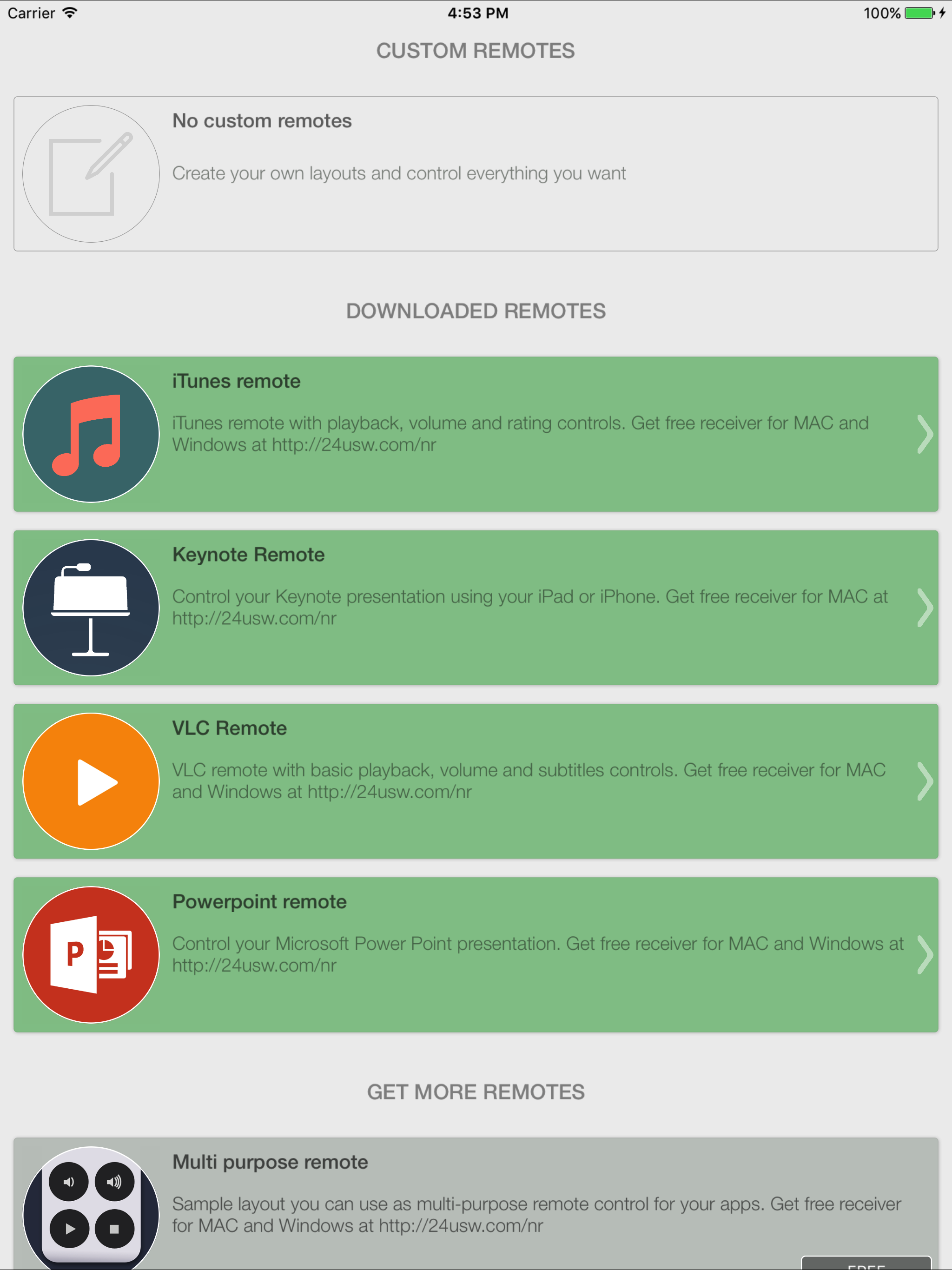Itunesfor Mac Part 100 @(net)
Posted : admin On 24.09.2019I am known for my strong views on mobile technology, online media, and the effect this has on and communication will have on the public conscious and existing businesses. I've been following this space for over ten years, working with a number of publishers, publications and media companies, some for long periods of time, others for commissions, one-off pieces or a series of articles or shows. As Scotland’s first podcaster, I continue to be a prominent voice in the rise of podcasting and new media online, and picked up a British Academy (BAFTA) nomination for my annual coverage of the Edinburgh Festival Fringe, alongside contributions to Radio 5 Live, the BBC World Service, presenting Edinburgh local radio's coverage of the General Election. You'll find me on Twitter ,.
The author is a Forbes contributor. The opinions expressed are those of the writer. At its heart, Apple Music is a simple proposition. For your monthly subscription fee, Apple will offer you access to a library of over 30 million tracks. You can listen, explore, and discover to your heart’s content, and you can take that music with you wherever you go.
But subscribing to Apple Music and making full use of the streaming service requires a sacrifice. You have to hand over control of your iTunes music library to Apple and hope that Cupertino’s arrogance will preserve your music collection. SAN FRANCISCO, CA – JUNE 08: Apple’s senior vice president Eddy Cue speaks about Apple Music during Apple WWDC on June 8, 2015 (Photo by Justin Sullivan/Getty Images). Part of the attraction of Apple Music is the ability to download tracks and playlists to your device for offline listening. This keeps the cost down of streaming over cellular data when you are out and about, and allows you to listen to Apple Music tracks when you are out of coverage.
Itunes For Mac Part 100 Net Download
MAC FEATURES UNIPORT After Servicing, Needle Automatically Back-Seats, Leaving Line 100% Free of Restrictions 1 Connection for Piercing & Servicing B12-411 DIVERSITECH Duluth, GA 2 Socket Head Screws. Hex Wrench Included. Needle Automatically Retracts. Pierces Easily By Hand. Sealed Wtih O Rings. Refuses To Leak.

These options are only available if you turn on iCloud Music – a service that mirrors much (but not all) of iTunes Match. You local library will be shadowed into the cloud and will be available to other devices.
If a track is already in Apple’s database then it will simply be copied in the cloud to your account, and unknown tracks will be uploaded to facilitate access. Because Apple Music is a cloud based service, adding favourite tracks and playlists in Apple Music will add them to your collection in the cloud. If you don’t turn on Apple Music, you don’t have access to your musical cloud record, and the only way to listen to the music is to stream tracks while online. No offline copies, no playlists, and no bookmarks (just the struggle to remember your favourite albums you’ve recently been listening to).

Is that moment when you turn on iCloud Music for the first time and your tracks are synced to the cloud. Apple’s methodology on this is not clear, but from reports and feedback from users across the internet, it appears that Apple’s view of metadata and what the ‘correct’ track is, will take precedence over your custom edits. Highlights his preference of listening to early tracks from The Beatles in mono format (just as they were recorded) rather than the automatic matching services’ preferences for stereo versions. Of collections approaching 20,00 songs becoming corrupted and full of duplicate entries, incorrect meta-data overwriting current entries, album art switched out to show the wrong albums, and more stories of personal pain. My experience hit an issue straight away with Grammy-nominated Italian rock-noir band ‘‘ and Nu-Jazz performer being seen as single artists. The accuracy of the service is dependant on the accuracy of Apple’s master library, not the time you have spent editing your own music. When you have spent time collating every song that has appeared in the Eurovision Song Contest, when you have hunted down an obscure studio tracks of Nova singing the Melodifestivalen version of ‘‘, when you have a playlist of UK number ones and the metadata holds all the chart information, to have Apple run roughshod over these because it has what it thinks is a ‘better’ version of ‘‘ on the server is nothing short of incredibly poor user design and customer satisfaction.
Next page other subscription services have solved this problem. People have a huge emotional connection to music, and that includes how they navigate and curate their music collections. For some it is that would accommodate 12″ vinyl records, for the digital generation it is the indexing, tagging, cover art and metadata attached to their music collections. Music fans looking to make best use of Apple Music are being asked to gamble their intimate information away in the hope that Apple’s servers will not disrupt their data with. And every time the music app is opened, every time a playlist is engaging, every time an album has been uncovered, every time Zane Lowe and Beats 1 highlights an interesting track, the gamble is presented once more in an insistent dialog box.
(l) Two acts called ‘Belladonna’ scrambled together. (r) iCloud Music wants to be turned on will you? (image: Ewan Spence). The disappointment for me is the ‘all or nothing’ nature of this choice. I have a rather eclectic collection of music on my desktop that I don’t want to risk. ICloud Music on the desktop would likely do just that. ICloud Music on my iPhone would open up the possibility of tracks stored on the smartphone becoming corrupted and then synced back to the desktop library.
But I love the discovery process of new music. I’ve been signed up to a music subscription in some form for almost ten years, and they have all been able to preserve my own music alongside the music from the service, even when they were intermingled on my media player or smartphone music app. All except Apple. Since the launch of iTunes Match I have heard horror stories and seen countless examples of the matching service running roughshod over a cultivated music collection. And I have kept myself as far away as possible from the potential damage.
Now the option to engage in that danger is being offered to me multiple times per day. Spotify can manage to provide me offline copies without risking any damage to local copies. Microsoft’s Xbox Music Pass does not ask me to gamble with my own files to listen, save, playlist, and work with the ‘rented’ music. Come to think of it, Microsoft had all these problems solved, along with a clear UI that differentiated everything nicely, when the Zune launched. If Microsoft managed to get it right all those years ago, why can’t Apple? Follow me on.
Itunes For Mac Part 100 Net Login
Find more of my work at, on, and. You should. RECOMMENDED BY FORBES.
You can try using PlayOnLinux. PlayOnLinux is a graphical tool supplementing Wine.
To install PlayOnLinux on Ubuntu follow the below steps: sudo wget -q '-O- sudo apt-key add - Add playonlinux repository and install it sudo wget -O /etc/apt/sources.list.d/playonlinux.list sudo apt-get update sudo apt-get install playonlinux In case you get an error, do this else skip to next sudo apt-get install curl p7zip-full p7zip-rar Now run it sudo playonlinux iTunes on Ubuntu. Download iTunes. Navigate to the already open PlayOnLinux window and click on Install a non-listed program as shown below. Browse to the iTunes setup file. Click on Next and follow the installation instructions.
These solutions are in more detail and have screenshots here: It is possible to run iTunes using Wine but you may have to download an older version and certain things will not work however these steps should allow you to at least get the program up and running:. Go to Ubuntu menu and select System – Administration – Synaptic Package Manager, type ‘wine’ in quick search and select wine package. Hit Ctrl+I to mark it for installation or set a checkbox left to package name (it will also ask to mark several dependency packages). Press Apply button or hit Ctrl+P and confirm the installation.
In a few minutes Ubuntu will download and install wine. After a confirmation message that packages were installed close Synaptic Package Manager. From this point wine is installed on your Ubuntu and you can run various windows applications including itunes. Download the latest version of iTunes from www.apple.com (today it is iTunes 9.2) or download one of previous versions from www.oldapps.com if the latest one poses problems or just refuses to install under wine emulator (this happens so be prepared for this situation). Open folder with downloaded itunes.exe (if you use Firefox as browser it’ll be saved directly to the desktop), select file and enter to file properties (right click – Properties). Save changes and execute the file by double click.

Follow itunes installation steps until it shows that installation is successfully finished. Once installation is finished you will be able to start itunes by clicking corresponding shortcut on Ubuntu desktop or running the following command in terminal (go to Ubuntu menu and select System – Accessories – Terminal): wine /.wine/dosdevices/c:/Program Files/iTunes/iTunes.exe The second and less popular way of getting iTunes running is by using a Virtualbox, and this way all of the features are available.
To do so follow the steps provided here:. Go to www.virtualbox.org and download the latest version of Virtualbox binary deb package for Ubuntu. Open downloaded package with GDebi Package Installer — it comes with Ubuntu by default and is associated with.deb files from the beginning so just double click Virtualbox deb package. Press ‘Install Package’ button and follow easy instructions to get Virtualbox package installed. Once finished you will get ‘Oracle VM Virtualbox’ item in Applications – System Tools menu. Open Applications – System Tools – Oracle VM Virtualbox and press button ‘New’ to create virtual machine, and prepare virtual machine for Windows XP (you can also use other versions of Windows) operating system that will be used to run iTunes. You may need to look into Virtualbox's documents on setting up a virtual machine as they can be kinda tricky sometimes.
Insert your preferred version of Windows media (disc, iso, or usb and I personally currently recommend Windows 7) and press ‘Start’ button to boot virtual machine. Install a copy of Windows to virtual machine and logon to the Windows desktop. In Windows inside virtual machine go to apple.com, download and install the latest version of iTunes. Once finished you will get workable itunes with all those terrific features it supports. Another way to keep iTunes in your life is dual-booting Windows and Ubuntu. And these are some alternatives to iTunes that work great in Ubuntu. Rhythmbox — this one comes with Ubuntu by default so it’s even not necessary to install it, just go to Applications – Sound and Video – Rhythmbox Music Player.
It provides powerful and easy music browser, can sort/search music of almost all known formats including streaming audio, can play and rip CDs and DVDs. One of the most important features of Rhythmbox is iPod support meaning e.g. I can connect my favourite ipod classic 160GB and transfer music to it without itunes at all. Developers say that Rhythmbox was inspired by Apple’s itunes. I believe them. Amarok — music player and manager with impressive list of features.
Currently this is the most powerful music engine available for Ubuntu and Linux on the whole. Amarok makes it possible to transfer files to iPod and other mp3 players, to buy legal music from Magnatune (www.Magnatune.com) store, to create dynamic playlists, to import itunes music database and much-much more. Amarok was designed for KDE (while Ubuntu runs Gnome) desktop manager so it requires a lot of dependencies when you install it — be prepared to download 200 MB of staff to get Amarok installed. Banshee — is open source media player supported by Novel. It brings a lot of useful features to user starting from ability to manage music library and media art and ending with full support of video and podcasts.
Banshee is one of the most pretty-looking application of this list, it took a lot of features from itunes and can also sync ipod and other media devices with your music and video library. I’m using Banshee for several years and still believe this is the best itunes-like music player for Ubuntu. Exaile — is very fast and easy-to-use music player for Gnome window manager. Currently it is on its early stage of development and didn’t reach 1.0 version but brings very powerful list of features like album art management, lyrics fetching or ipod device support. Exaile was designed as an alternative to Amarok and iTunes so you will find many features from them.
Buy legal music in Ubuntu without itunes There are two major alternatives to iTunes Music Store in Ubuntu which can be used in the same way — Jamendo, Magnatune. Ubuntu applications Rhythmbox, Banshee, Amarok and Exaile supports mentioned music stores and make it possible to navigate the music store and buy the music as easily as in itunes music store.
Also there are a lot of music stores like Amazon which makes it possible to preview and buy music using any browser like Firefox, Opera or Chromimum which are supported by Ubuntu. Alternatively, if you can't get Itunes stable on your desktop, you can try a native approach. Last time since I tried it, was when I had the Iphone 3.
It did work for me then. And the status of their features has only gone greener since then. Development is still on going.: usbmuxd-1.1.0.tar.bz2 has been officially released. Iphone support: Tested with iPod Touch 1G/2G/3G/4G/5G, iPhone 1G/2G/3G/3GS/4/4S/5/5C/5S/6/6+, iPad 1/2/3/4/Mini/Mini 3/Air/Air 2 and Apple TV 2G/3G running up to firmware 8.1.2 on Linux, Mac OS X and Windows. Install it like so: sudo apt-get install libimobiledevice-dev Reboot your system and you will be able to do with it whatever you want, using file-managers and Media Players.can read.
Reference:. MIGRATE YOUR ITUNE FOLDER instead of installing iTunes on Ubuntu. Use banshee instead. Just wanted to post a follow up to what I said above: Please note that I just tested this and it works Copy your iTunes folder from it's location in Windows (under My Music) to an external HDD or USB Thumb drive.
After you have Ubuntu installed you need to install Banshee because 12.04 comes with Rhythm Box by default. In my case I also installed ALL of the (install banshee from the software center first) and then install all the Banshee add-on's listed under Banshee in the Ubuntu Software Center. You also should install (from the Software Center) the Ubuntu Restricted Codecs (it's called UBUNTU RESTRICTED EXTRAS). OK after all that is done go ahead and fire up Banshee and select (from the top) EDIT then under that select PREFERENCES Checkmark the option called, 'Copy Files to media folders when importing'. The only other thing I checkmarked on this page was the 'Update file and folder names' (everything else is optional) After you do that select (from the top) MEDIA then under that select IMPORT MEDIA Now change the selection to read, 'iTunes Media Player' It will now let you browse to your iTunes folder and select the XML file. The file is under the iTunes folder (it's easy to find).
Select it and click 'open' and then 'import' Banshee will now add the iTunes songs to itself BUT (and this is the important part) it will also copy all your music to your Ubuntu MUSIC folder. After it is done your music is in your Ubuntu MUSIC folder and you can continue to use Banshee or use Rhythm Box or any other Linux based music player. Hope this helps!